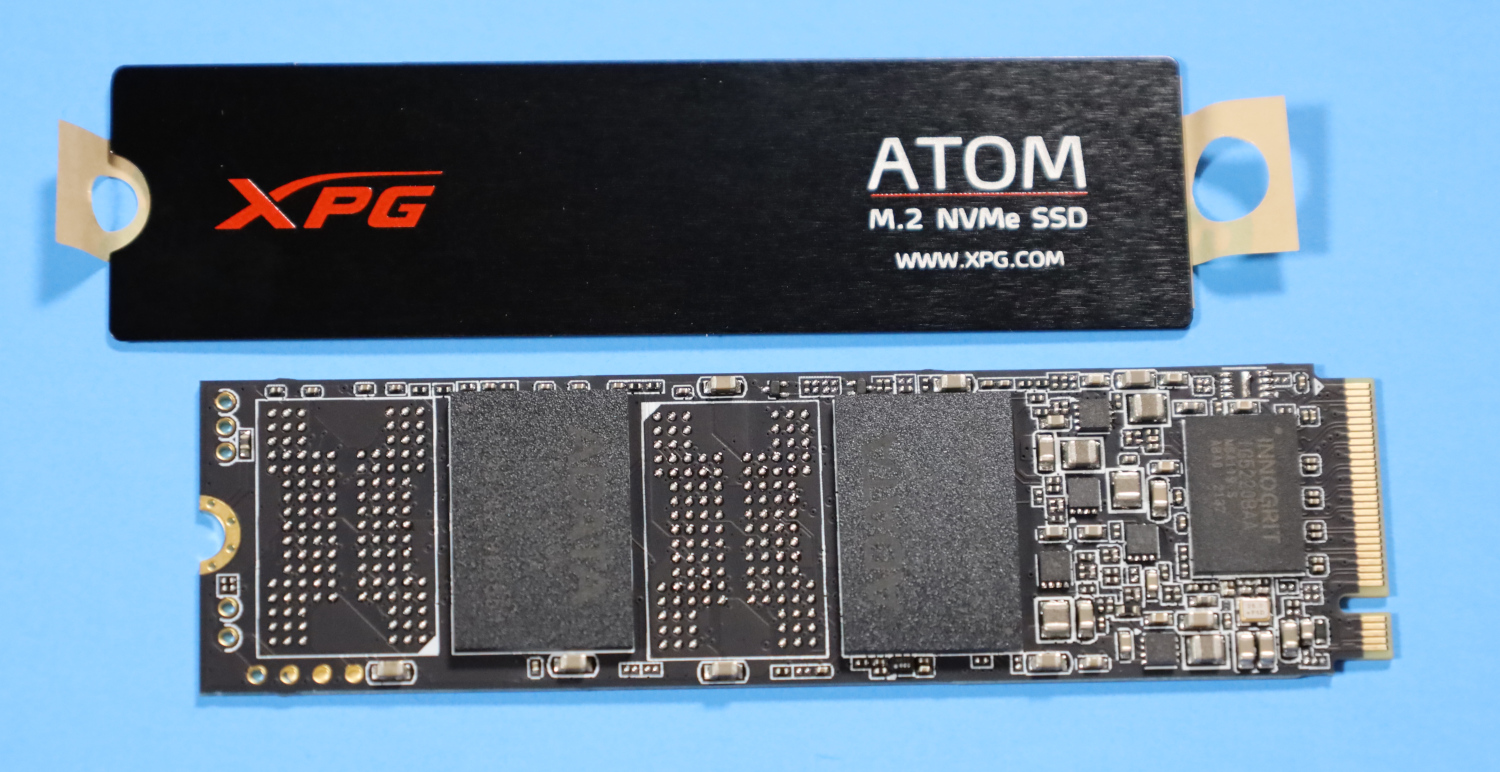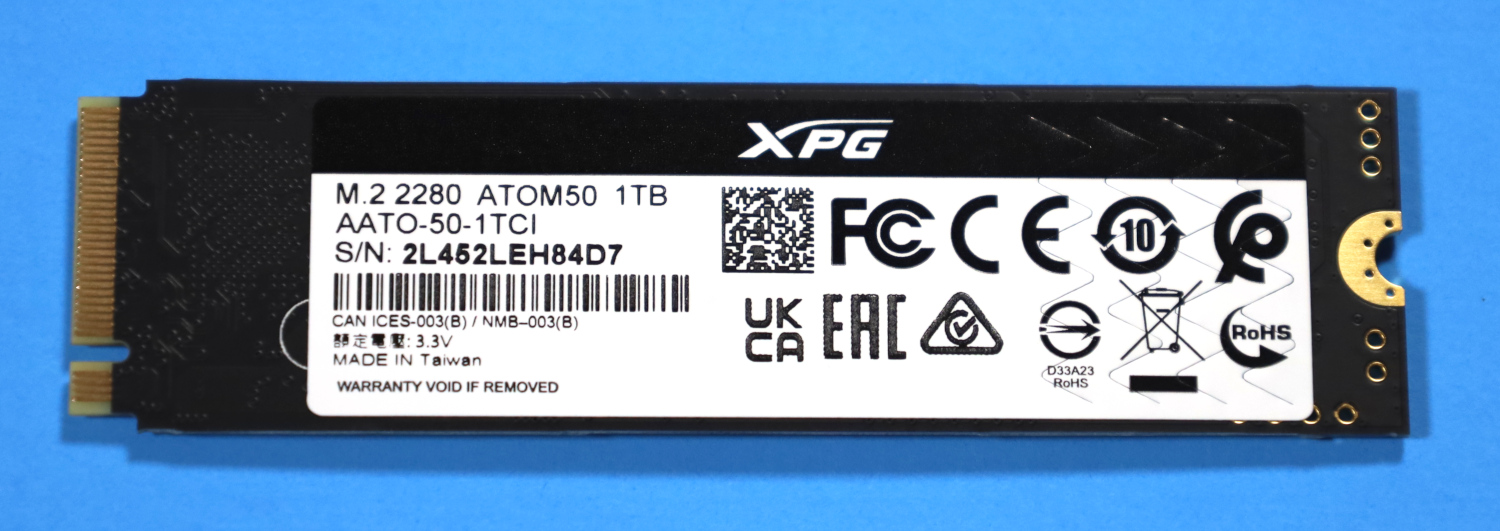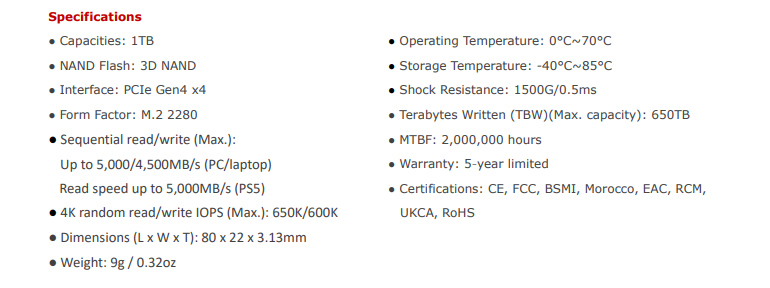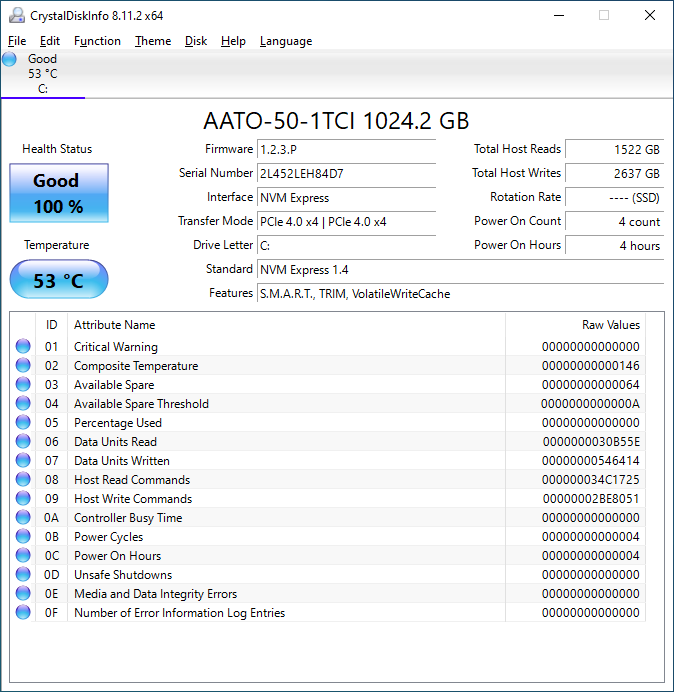Today we are taking a look at the ADATA XPG ATOM 50 1TB NVMe SSD. We have previously reviewed the GAMMIX S70 drive and came away very impressed. The ATOM 50 drive is targeting a performance bracket below that of the S70, bringing it more in line with the first-generation of PCIe 4.0 SSDs. With that lower target performance comes a lower price point, so I have high hopes for the value proposition on the ATOM 50.
ADATA XPG ATOM 50 1TB NVMe SSD
The ADATA XPG ATOM 50 1TB comes in a single-sided M.2 2280 (80mm) form factor.

The ATOM comes with a small metal heat spreader that can be added by the end-user if desired. In my opinion, this is the ideal method for including a heatsink with a drive, and I am happy to hear it here. With that said, what comes with the ATOM 50 is a barely-there strip of metal, so we will have to check thermals to validate efficacy.
The top of the drive is home to all components, few that they are. Our 1TB drive has two NAND pads occupied, and two empty. This drive is based on the InnoGrit IG5220 controller and is operating without a DRAM cache. This is my first encounter with the IG5220, but it is purpose-built to operate without DRAM and instead uses HMB or host memory buffer. The NAND is 176-layer TLC by Micron, and ADATA continues their trend of silkscreening their own logo onto the NAND packages themselves.

The bottom of the drive has nothing except the product label.
ADATA XPG ATOM 50 Specs
The ADATA XPG ATOM 50 SSDs has been announced at both 1TB and 2TB capacities, though only the 1TB seems to actually exist on the market for now.

The rated sequential performance of the ADATA XPG ATOM 50 1TB comes in at 5000 MB/s read and 4500 MB/s write. 5000 MB/s is an interesting performance target, as it narrowly misses the recommended 5500 MB/s sequential read speed listed by Sony as the official requirement for use in the Playstation 5 console. With that said, in current games, it seems the ATOM 50 works well in a PS5, and its slim design easily fits the physical parameters.
Endurance on the ATOM 50 is ever so slightly above average at 650 TBW, and the warranty is set to 5 years like many premium drives. In addition, ADATA has supposedly promised to keep a consistent controller/NAND pairing on this drive throughout its lifetime, hopefully cutting down on surprises late in the warranty cycle for drives like this.
In one final small note, this is a 1024GB drive and not a 1000GB drive, which is nice for a tiny bit of extra capacity.

CrystalDiskInfo can give us some basic information about the SSD, and confirms we are operating at PCIe 4.0 x4 speeds using NVMe 1.4.
Test System Configuration
We are using the following configuration for this test:
- Motherboard: ASUS PRIME X570-P
- CPU: AMD Ryzen 9 5900X (12C/24T)
- RAM: 2x 16GB DDR4-3200 UDIMMs
Our testing uses the ADATA XPG ATOM 50 1TB as the boot drive for the system, installed in the M.2_1 slot on the motherboard. The drive is filled to 85% capacity with data and then some is deleted, leaving around 60% used space on the volume.
Next, we are going to get into our performance testing.





Would be interesting how this SSD with its low post-cache-write speeds would impact the system performance as swap/page file drive. There are still lots of older systems in use that are hardware limited to 16 or even 8 GB RAM.